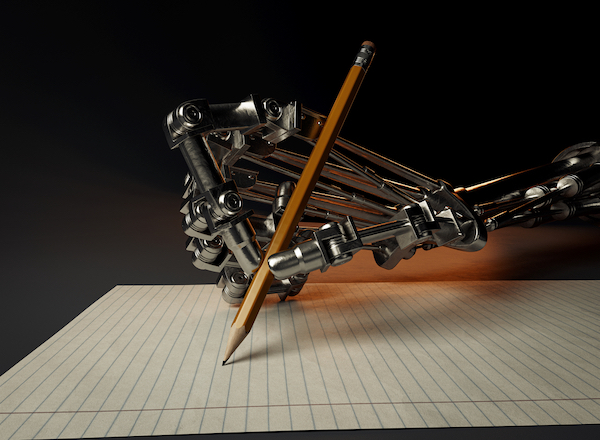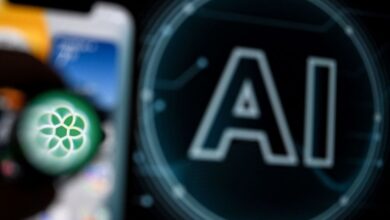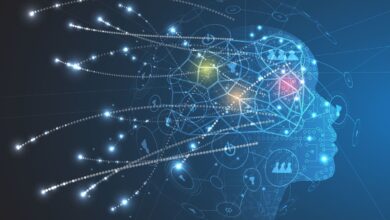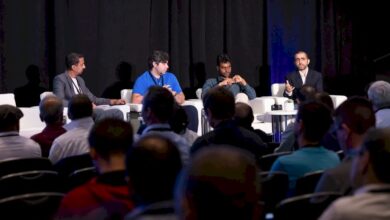LLMs Will Likely Never Write Claims as Well as Humans

“I expect that even future LLMs will have the same downsides as a new associate when it comes to claim drafting, but without the benefits that come from training a new patent practitioner.”
Like most patent attorneys, I get multiple emails each month for artificial intelligence tools purporting to help patent attorneys draft patent applications. I have done demos, and I have no doubt that in five years almost all patent drafting practitioners will be using these generative AI tools in some capacity. But I am also convinced that these tools will not be especially helpful in drafting claims.
I am Not Anti-Technology for Patent Drafting
I do not have a fear of losing my job to technology, so do not take this article as backlash to trash generative AI. In fact, I look forward to the time when all of the monotonous tasks of patent drafting and prosecution are done by helpful technology. I already use some AI tools for certain aspects of patent drafting and proofreading. If these tools were taken from me, I would feel like I was backing out of the driveway without a backup camera, which was the norm not long ago, but now feels irresponsible. While it took a slight learning curve to figure how to best use them, I now feel inefficient and mistake prone when I work without such tools.
AI Can Be Your Inexperienced Associate—But Can and Should it be More?
I am not saying generative AI tools will not be able to draft claims that pass the sniff test. I have no doubt AI will be able to output a properly structured claim that includes the components of an invention. I was drafting claims that were serviceable within my first year of drafting patents applications, as were almost all of the patent attorneys I have worked with throughout my career.
Those claims described the invention provided by clients. Those claims covered the preferred embodiment. Those claims were grammatically correct. But those claims were always revised to a large degree by supervising attorneys in ways that took me years to fully understand.
Every term used in a claim and its place in a sentence is important. Patent infringement lawsuits can be won or lost because of relatively trivial wording issues. For optimal value, claim language has to be precise in the correct areas.
Some parts of a claim need to be described in a broader manner than others. If a claim is unreasonably broad at the point of novelty, it can at best prolong prosecution, and at worst render patentability impossible. If a claim is too narrow at the point of novelty, it is easy to design around and thus is worthless. If a claim is too broad when describing conventional aspects, it can prompt an examiner to search in a field of art that is outside of that envisioned by the client, adding difficulty to patentability. If a claim is too narrow when describing conventional aspects, it can also be too easy to design around. These aspects are usually overlooked by new patent attorneys and are learned through years of experience and evolving tastes.
If I am being honest, inexperienced associates often do not save experienced patent practitioners time in drafting claims. The act of an experienced practitioner rewriting an inexperienced practitioner’s claims can be more inefficient than starting from scratch. The experienced practitioner tries to find a balance between deciding which language to keep (even though it is different stylistically from language preferred by the experienced practitioner), which language to change, and which language to discard. It can be complex tasks due to the intersection of technical and legal language. The language has to be as technically accurate as possible, while taking into account legal rules of claim construction.
From my experiences of demoing AI tools, they appear to fall into this same bucket of output – they seem unlikely to produce claims that provide sufficient value to experienced patent drafters. Maybe I am underestimating the future progress in this area or would have a different view if I were using these tools in practice with my clients, but I expect that even future LLMs will have the same downsides as a new associate when it comes to claim drafting, but without the benefits that come from training a new patent practitioner.
In contrast to a new associate, one is not aiding AI’s professional development. One might train a model, but the results will be less fulfilling. I would rather have an experienced associate whom I can teach the art of crafting claim language. I would rather help someone build a career, albeit one that is aided by evolving technology. I would rather help someone who can get buried in the craftmanship of thinking deeply about how to solve a difficult problem that does not have one correct answer. I love drafting claims due to the impossibility of drafting perfect language and the evolution as a professional it takes to get to the point of proficiency. And without sounding too cheesy, I like sharing this experience with other humans.
The Way Humans Draft Well-Crafted Claims is Difficult to Emulate
Drafting claims should always be a balance between patentability/invalidity and infringeability. Almost everything in patent law is somewhere along a spectrum and very little is black and white. Whether claim language is sufficient to obtain a patent might depend on the examiner, and the ability of the patent attorney. There is also rarely such a thing as a 100% valid patent or a 100% invalid patent. It depends on the budgets of the parties, the lawyers, the expert witnesses, the judge and the jury. Almost everything is dependent on a number of factors that are not cut and dry. The job of a patent attorney is to move the needle in the favor of clients as much as possible, but perfection is not achievable.
One is trying to thread a tight needle in this regard, and which way to lean can depend on client tastes and past experiences of the patent practitioner. For a theoretical example, one attorney might draft independent claims that have a 90% chance of being patentable and valid, but only a 10% chance of being actually infringed, while another patent attorney might draft a claim that has a 10% chance of being patentable, but a 100% chance of being infringed.
Those differences can be the result of input from the client, but mostly it’s based on experiences of the practitioner and the questions asked by the practitioner. Oftentimes, these are based on an intuition that comes with years of reviewing competitors’ patents and understanding the real-world range of how the U.S. Patent and Trademark Office’s (USPTO’s) “broadest reasonable interpretation” rubric (i.e., “reasonable” has a wide range depending on the examiner) is applied to patent applications. Sometimes they are based on subtle comments made by clients over the years – which I cannot imagine will be reproducible by AI.
Common terms that we hear in the patent profession are “litigation-quality” patents and “low quality” patents. The terms have been further pushed in the spotlight after the passing of the America Invents Act (AIA) and creation of the patent-invalidating Patent Trial and Appeal Board (PTAB). But, as noted above, there is a ton of uncertainty in patent law because of the limits of language and the subjectiveness of interpreting the language of a claim in view of the prior art. Two minds can reasonably disagree on whether an invention is obvious or whether an invention is directed to an abstract idea (whatever the hell that means). If one is looking for certainty, stay away from patents and patent law.
Why am I making these points? Because I expect that generative AI will be most useful in tasks with greater certainty. These tasks include drafting parts of the specification that are tied to aspects other than the point of novelty, such as describing the background of a well-defined technology.
Sure, AI models can be tuned to take into consideration uncertainties. But this is deep work, while the work with greater certainty is shallower work. Deep work requires entering into a state where one can balance a wide range of inputs to achieve the level of patentability/invalidity/infringeability desired by the client, while also taking into consideration business goals of the client. (If you are interested in a breakdown of this topic, read Deep Work: Rules for Focused Success in a Distracted World, Cal Newport, January 5, 2016).
One can input the transcript of an inventor or businessperson, but that transcript will lack emphasis, ignore the body language and tone of the conversation, make assumptions about coined terms, and disregard a chat over a coffee that brought to light an important business or marketing need. It will also disregard which level of patentability/invalidity/infringeability ratio is desired.
Achieving this balance can be incredibly difficult. Which is why I didn’t understand it as an inexperienced patent drafter and my mentors could not explain it to me in sufficient detail back then. It takes learned human experience.
Harnessing AI to Avoid Being Replaced By It
And frankly, this is what makes the job rewarding. An inexperienced patent attorney can get patents. But it takes this experience to get patents that are closest to achieving the balance desired for your client, especially when this desire is not explicitly telemarked.
I am not discounting the possibility that generative AI tools could become helpful for assistance in drafting claims. Tools could be developed that compare the claims to the invention disclosure and ask questions about whether alternative language could be helpful. Or tools could perform a prior art search using the claim language and suggest differences to the user. Such tools would be more interactive and would aid in the deep work of refining claim language, as opposed to generating an initial draft of the claim language.
I thus look forward to AI developing further to take away the shallow work and becoming more helpful for the deep work. The deep work is the fun stuff. We patent-drafting humans need to keep improving at the deep work to fend off generative AI. If you are not putting extra effort into asking the right questions, thinking about business needs, anticipating claim interpretation and drafting strategic independent AND dependent claims, you increase the chances you will be replaced by generative AI.
Image Source: Deposit Photos
Author: albund
Image ID: 589653746



